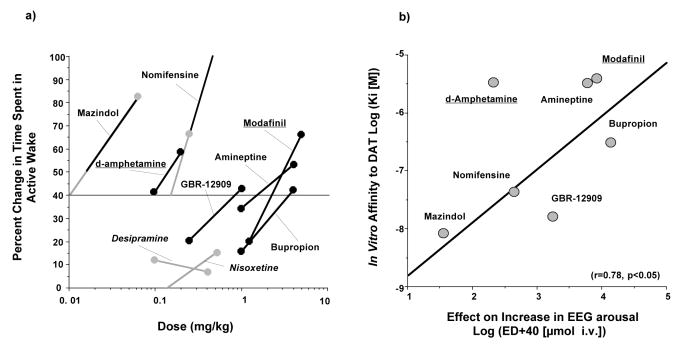Fig. 7. Effects of various DA and NE uptake inhibitors and amphetamine-like stimulants on the EEG arousal of narcoleptic dogs and correlation between in vivo EEG arousal effects and in vitro DAT binding affinities.
The effects of compounds on daytime sleepiness was studied using 4-hr daytime polygraphic recordings (10:00-14:00) in 4-5 narcoleptic animals. Two doses were studied for each compound. All DA uptake inhibitors and CNS stimulants dose-dependently increased EEG arousal and reduced slow wave sleep (SWS) when compared to vehicle treatment. In contrast, nisoxetine and desipramine (two potent NE uptake inhibitors) had no significant effect on EEG arousal when doses that completely suppressed REM sleep were injected. Compounds with both adrenergic and dopaminergic effects (nomifensine, mazindol, D-amphetamine) were active on both EEG arousal (left panel) and REM sleep. The effects of the two doses studied for each stimulant was used to construct a rough dose-response curve (left panel). The drug dose that increased the time spent in wakefulness by 40% more than the baseline (vehicle session) was then estimated for each compound. The order of potency of the compounds obtained was: mazindol > (amphetamine) > nomifensine > GBR 12,909 > amineptine> (modafinil) > bupropion. In vitro DA transporter (DAT) binding was performed using [3H]-WIN 35,428 onto canine caudate membranes and demonstrated that the affinity of these DA uptake inhibitors varied widely between 6.5 nM and 3.3 mM. In addition, it was also found that both amphetamine and modafinil have a low but significant affinity (same range as amineptine) for the DAT. A significant correlation between in vivo and in vitro effects was observed for all 5 DA uptake inhibitors and modafinil (right panel).

